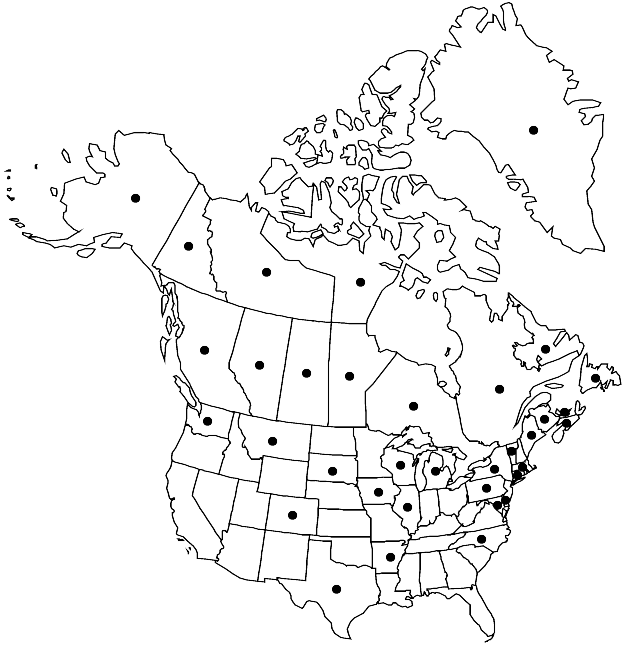Difference between revisions of "Hypnum cupressiforme"
Sp. Musc. Frond., 291. 1801.
FNA>Volume Importer |
imported>Volume Importer |
||
| (3 intermediate revisions by 2 users not shown) | |||
| Line 9: | Line 9: | ||
|special_status={{Treatment/ID/Special_status | |special_status={{Treatment/ID/Special_status | ||
|code=F | |code=F | ||
| − | |label= | + | |label=Illustrated |
}} | }} | ||
|basionyms= | |basionyms= | ||
| Line 15: | Line 15: | ||
|name=Stereodon cupressiformis | |name=Stereodon cupressiformis | ||
|authority=(Hedwig) Mitten | |authority=(Hedwig) Mitten | ||
| + | |rank=species | ||
}} | }} | ||
|hierarchy=Hypnaceae;Hypnum;Hypnum cupressiforme | |hierarchy=Hypnaceae;Hypnum;Hypnum cupressiforme | ||
| Line 28: | Line 29: | ||
|distribution=Nearly worldwide;except Antarctica. | |distribution=Nearly worldwide;except Antarctica. | ||
|discussion=<p>Varieties 9 (4 in the flora).</p><!-- | |discussion=<p>Varieties 9 (4 in the flora).</p><!-- | ||
| − | --><p><i>Hypnum cupressiforme</i> is an extremely polymorphic species, reflected in the more than 60 varieties that have been described. The species has a wide ecological amplitude as well as a nearly cosmopolitan distribution and is found in all climatic regions except the Antarctic. Taxonomic features reliable in most other species of <i>Hypnum</i> are plastic in <i>H. cupressiforme</i>. Within a single clone, it is possible to sort out several named varieties. Variety lacunosum Bridel was noted by H. Ando (1989) to be weakly differentiated in North America, and he tentatively cited specimens from Nova Scotia, Newfoundland, and South Dakota. Ando noted that < | + | --><p><i>Hypnum cupressiforme</i> is an extremely polymorphic species, reflected in the more than 60 varieties that have been described. The species has a wide ecological amplitude as well as a nearly cosmopolitan distribution and is found in all climatic regions except the Antarctic. Taxonomic features reliable in most other species of <i>Hypnum</i> are plastic in <i>H. cupressiforme</i>. Within a single clone, it is possible to sort out several named varieties. Variety lacunosum Bridel was noted by H. Ando (1989) to be weakly differentiated in North America, and he tentatively cited specimens from Nova Scotia, Newfoundland, and South Dakota. Ando noted that <i></i>var.<i> lacunosum</i> typically is robust, thick-complanate to julaceous, with leaves almost straight to weakly falcate and abruptly narrowed to a short acumen, but the North American material is not robust and is therefore problematic.</p> |
|tables= | |tables= | ||
|references= | |references= | ||
| Line 75: | Line 76: | ||
-->{{#Taxon: | -->{{#Taxon: | ||
name=Hypnum cupressiforme | name=Hypnum cupressiforme | ||
| − | |||
|authority=Hedwig | |authority=Hedwig | ||
|rank=species | |rank=species | ||
| Line 86: | Line 86: | ||
|publication title=Sp. Musc. Frond., | |publication title=Sp. Musc. Frond., | ||
|publication year=1801 | |publication year=1801 | ||
| − | |special status= | + | |special status=Illustrated |
| − | |source xml=https:// | + | |source xml=https://bitbucket.org/aafc-mbb/fna-data-curation/src/2e0870ddd59836b60bcf96646a41e87ea5a5943a/coarse_grained_fna_xml/V28/V28_831.xml |
|genus=Hypnum | |genus=Hypnum | ||
|species=Hypnum cupressiforme | |species=Hypnum cupressiforme | ||
Latest revision as of 21:38, 5 November 2020
Plants small to large, rusty green, golden green, yellow-green, or pale green. Stems 1–8+ cm, pale to yellowish green, brown with age, creeping to erect, complanate-foliate or not, irregularly pinnate to nearly unbranched, attached shoots often regularly pinnate, branches 1–3 cm; hyalodermis absent, central strand poorly developed; pseudoparaphyllia filamentous, 1–3-seriate at base. Leaves strongly imbricate, not to decidedly falcate-secund, ovate to oblong-lanceolate, gradually or abruptly narrowed to apex, 1.5–2 × 0.5–0.8 mm; base not decurrent, not auriculate; margins recurved to plane proximally, serrulate (sometimes weakly) distally, occasionally nearly entire; acumen slender; costa double and short or obscure; alar region well defined, basalmost cells larger, sometimes hyaline, yellowish or brownish; basal laminal cells shorter, wider than medial cells, not pigmented, walls not pitted; medial cells (50–)60–80 × 3–4(–5) µm. Sexual condition dioicous; inner perichaetial leaves oblong-lanceolate, margins serrulate distally, costa obscure. Seta reddish, 1–2.5(–3) cm. Capsule slightly inclined, reddish, cylindric, 1.8–2.5(–2.8) mm; annulus 1–3-seriate; operculum conic to rostrate; endostome cilia 1–2(–3).
Distribution

Nearly worldwide, except Antarctica.
Discussion
Varieties 9 (4 in the flora).
Hypnum cupressiforme is an extremely polymorphic species, reflected in the more than 60 varieties that have been described. The species has a wide ecological amplitude as well as a nearly cosmopolitan distribution and is found in all climatic regions except the Antarctic. Taxonomic features reliable in most other species of Hypnum are plastic in H. cupressiforme. Within a single clone, it is possible to sort out several named varieties. Variety lacunosum Bridel was noted by H. Ando (1989) to be weakly differentiated in North America, and he tentatively cited specimens from Nova Scotia, Newfoundland, and South Dakota. Ando noted that var. lacunosum typically is robust, thick-complanate to julaceous, with leaves almost straight to weakly falcate and abruptly narrowed to a short acumen, but the North American material is not robust and is therefore problematic.
Selected References
None.
Lower Taxa
Key
| 1 | Branch leaves 1.5-2 × 0.4-0.6 mm or slightly larger | > 2 |
| 1 | Branch leaves 1-1.4 × 0.2-0.4 mm or slightly smaller | > 3 |
| 2 | Stems weakly complanate-foliate; leaves usually falcate, sometimes strongly so; alar cells not excavate or pigmented. | Hypnum cupressiforme var. cupressiforme |
| 2 | Stems subjulaceous to complanate-foliate; leaves straight to weakly falcate; alar cells excavate, pigmented. | Hypnum cupressiforme var. subjulaceum |
| 3 | Leaves usually falcate, sometimes strongly so; margins subentire to distinctly toothed distally. | Hypnum cupressiforme var. cupressiforme |
| 3 | Leaves straight to somewhat falcate; margins entire or subentire | > 4 |
| 4 | Stems subjulaceous, creeping; leaves oblong-lanceolate, gradually narrowed to apex; laminal cells 60-80 × 3-4 µm (or slightly larger). | Hypnum cupressiforme var. filiforme |
| 4 | Stems julaceous, creeping to erect; leaves ovate or widely oblong, abruptly narrowed to apex; laminal cells 40-50 × 5-6 µm. | Hypnum cupressiforme var. julaceum |